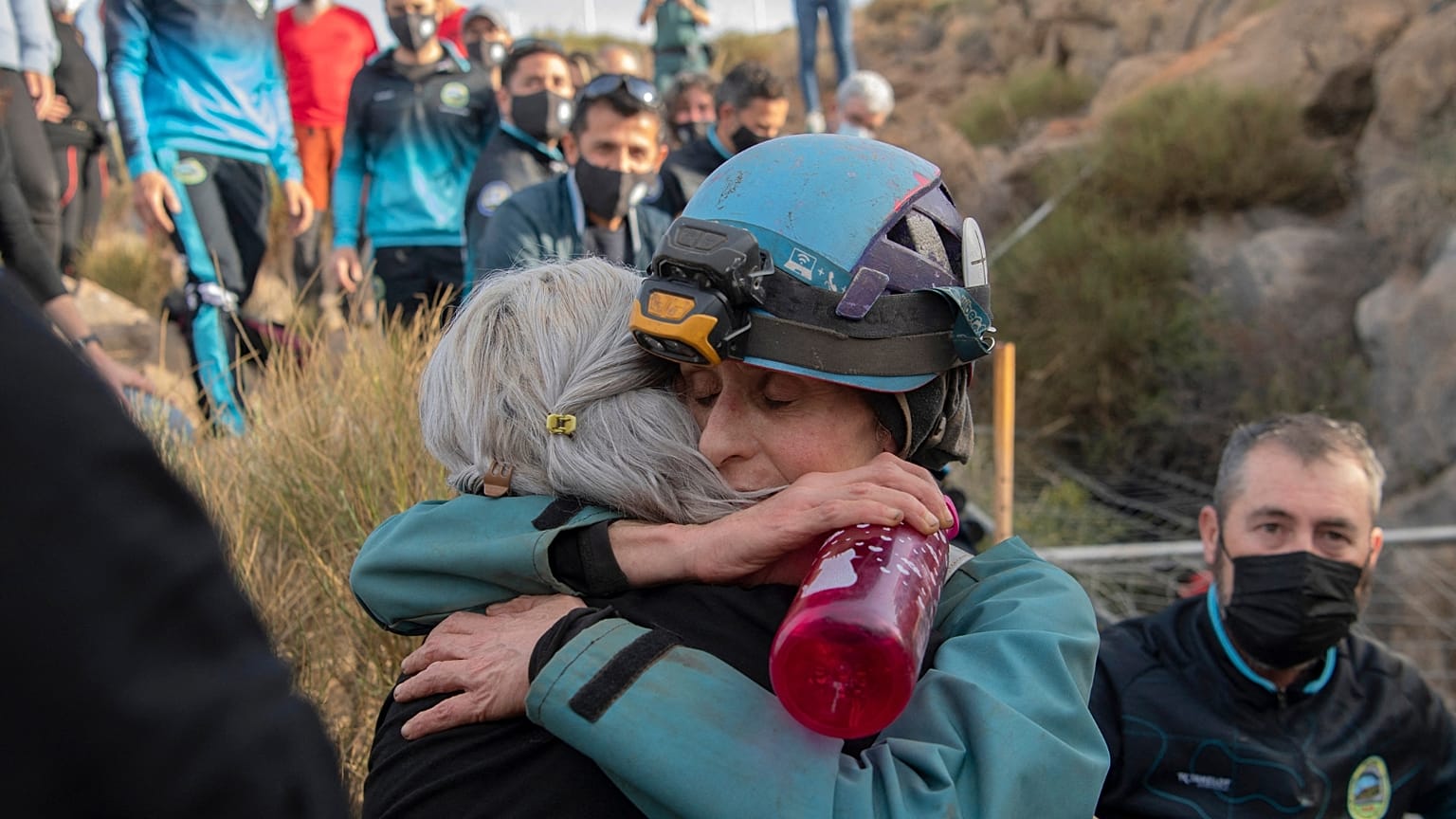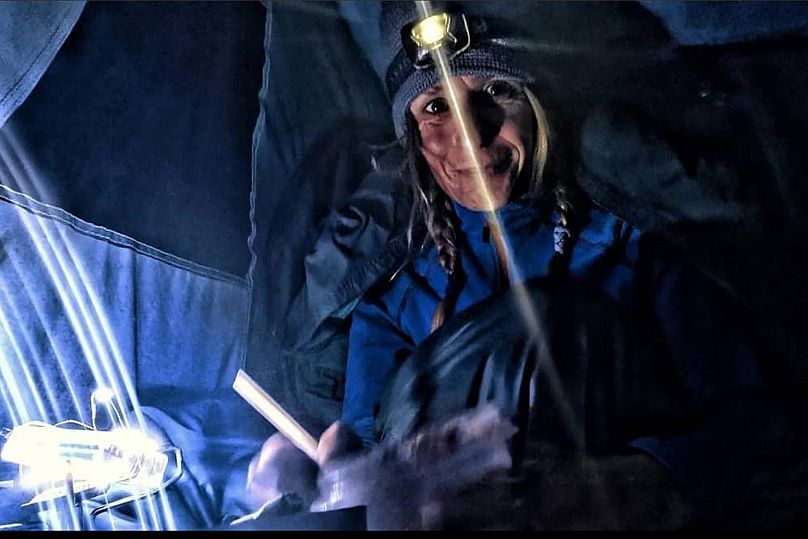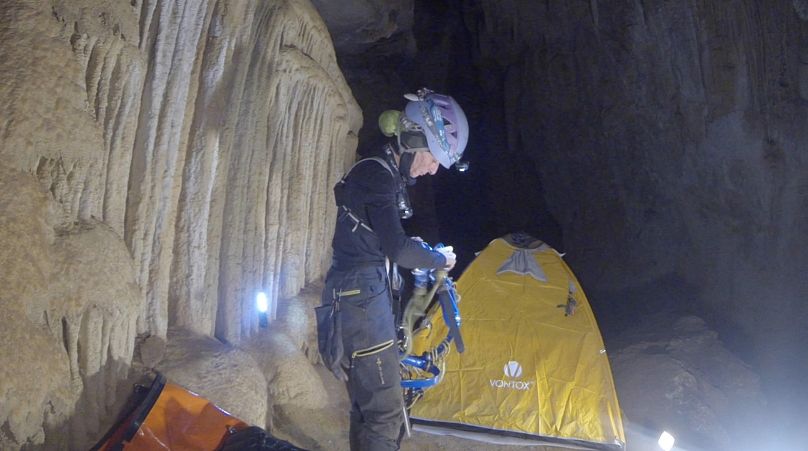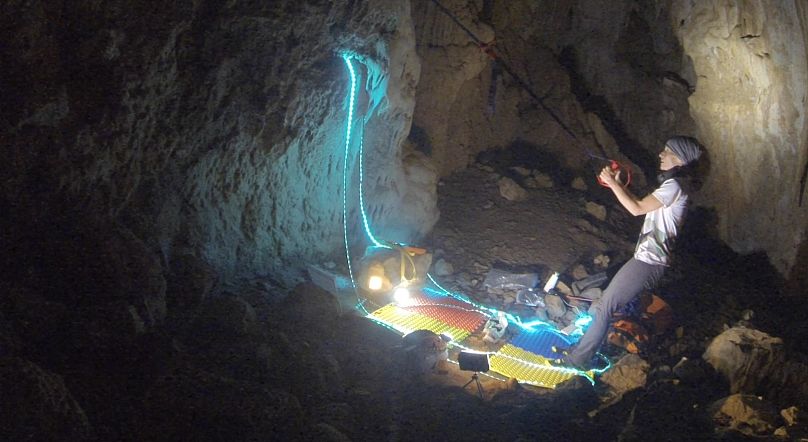Beatriz Flamini emerged from the 70-metre-deep cave in southern Spain last Friday to learn about the Ukraine war for the first time.
Beatriz Flamini knew she had to resist.
Under no circumstances would she leave her new home, not even if a relative died.
Stuck 70 metres below ground in a cave in southern Spain, the 49-year-old Spanish climber managed to beat a self-set challenge of spending 509 days without any contact with the outside world.
When she emerged last Friday, she had to wear sunglasses to protect her eyesight from the brightness.
"I had got on very well with myself, I could've stayed a bit longer," she said laughing. "But I needed a shower."
For one year, four months and 22 days she lived detached from the world. Beatriz had no news from the outside, not even an awareness of how many days had passed inside the dark cave.
Her challenge was to see if she could survive in what she calls "self-sufficiency" and also to record a documentary produced by the Spanish company Dokumalia.
Since coming back, the climber has been treated by a team of psychologists and doctors who are assessing her condition to help her adapt to living above ground again.
Beatriz has not been able to answer Euronews’ questions because her team is concerned about her health.
Instead, her physical trainer David de Antonio explained her situation.
"It’s important to understand that when Beatriz left the cave, she went from zero contact to one hundred per cent all at once and that didn't help her," says de Antonio.
"This whole adventure will end when she is feeling okay. I see it as if we had climbed Everest. We're on top and now we have to come down," he adds.
500 days without contact with the outside world
Beatriz is not the first to try living in a cave for such a long time. Before starting her adventure, she decided to add some extra trickiness to make the experience unique.
One of these was to remain in a cave alone, without time references.
The climber had no idea what day or time it was. The only technological devices she had inside the cave were a camera she used to record her experience and a computer with a "capped" operating system.
The device had a router and was used by Beatriz to communicate her basic needs to the team. She could ask for water or food when she felt she needed it.
Food, light bulbs and batteries were brought to her by members of a local caving group. They had previously agreed on a spot to leave supplies so she could collect them without seeing anyone.
When necessary, they also collected her waste.
Her diet was based on baby food and occasionally they brought her special treats, such as a piece of fruit or avocado.
"As she had no time references, she couldn't have a routine. She didn't know when to eat or sleep. She couldn’t calculate if she had lunch an hour or a day ago. And she didn’t know if she had slept ten minutes or ten hours,” says her trainer.
The only thing that allowed her to keep track of time was her own menstruation.
Beatriz did not communicate with the team on a daily basis, but psychologists used messages to assess her mental health and know how she was doing.
This was the only contact she had with the outside world. No one knew anything else, not even her family.
During her experience, she had to overcome harsh situations. She suffered auditory hallucinations and stated that because the cave was silent her “brain invented things", even hearing screams from time to time.
But the worst was a fly invasion. “Flies came in, they started laying larvae, I couldn't control it and I was engulfed by them," she said.
Technical problems
After the first 300 days, the athlete briefly walked out of the cave for six days due to a technical problem.
She felt “the noise of the router in her brain”, alluding to the device she had within the cave to communicate with her team.
She camped for six days at the entrance of the cave while a technician fixed the device.
After this unforeseen event she went back to the cave. However, her team feared that after emerging she would not want to go back in.
"The brain is always looking for excuses to give up. This incident complicated things because it could have been the perfect excuse for Beatriz to give up," says de Antonio.
"The first time you do something it's easier to take the plunge as you don't know what you're going for. The complicated thing is to do the same thing again knowing what you're up against. The fact that she kept up her challenge even knowing what was going to happen shows her incredible willpower," he adds.
Holding to her determination she managed to complete the adventure.
Recovery process
On Friday, Beatrice discovered that there is a war going on in Ukraine, but the news that struck her most was the death of Queen Elizabeth II.
"They told me she had died," she confessed to the media in disbelief.
Voluntary isolation has taken its toll. De Antonio says that before going into the cave they worked on a plan to minimise the damage.
"She studied with psychologists how to anticipate possible situations that could happen inside the cave," he says.
They also drew up a training plan so that she wouldn't lose her physical shape, although he says that, being an athlete, Beatriz was already in very fit.
At the moment, they are trying to reconnect her with the natural cycle of things.
"No one has been deprived of light for so long. The question her trainers are now asking themselves is how to resume the rhythms in a healthy way," she says.
De Antonio defines the mountaineer's recovery process as an experiment.
"As no one has done something like this, we don't have an example to follow. The doctors will never come across a case like Beatriz's, so they are looking at similar cases to be able to treat her."
These 500 days in the dark have been a "controlled madness", as described by the trainer. “A cave is a very hostile place, it is not compatible with human life."
During this time, the climber said she never thought about quitting, but her coach wonders how she did it.
"I don't know what went through her mind, I don't know if she ever thought about it, that's something she'll have to tell us in the future," he says.


















